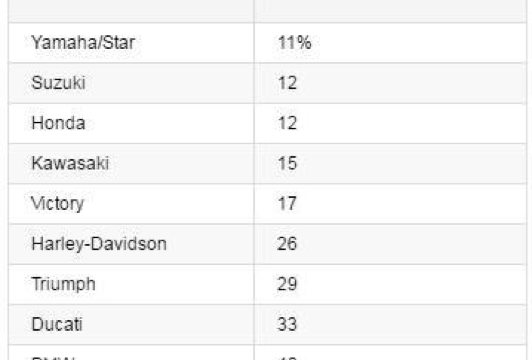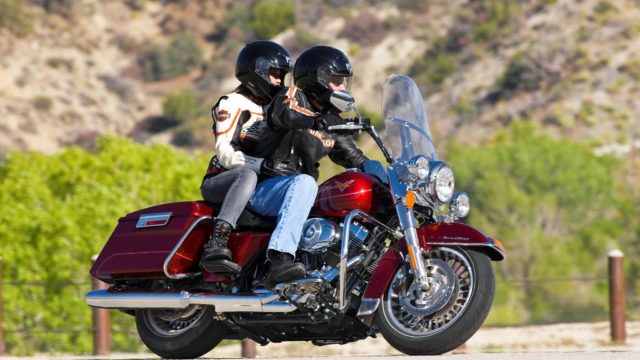Harley Davidson Motorcycle Failure Rate
What is the Most Reliable Motorcycle Brand of all Time!
Yamaha, Suzuki, Honda, and Kawasaki are all among the more reliable brands, as per the survey of more than 11,000 Consumer Reports subscribers. The predicted failure rates for four-year-old motorcycles ranged from 11 to 15 percent in this group. The domestic brands Victory and Harley-Davidson fell in between the extremes, with 17 and 26 percent, respectively.
The remaining brands—Triumph, Ducati, BMW, and Can-Am—were among the more trouble-prone. In fact, BMW and Canada-based Can-Am are both estimated to have failure rates of around 40 percent by the fourth year of ownership.
The survey found that the Japanese brands Yamaha, Suzuki, Honda, and Kawasaki were the most stable brands, while Triumph, Ducati, and BMW were, in the report’s delicate language, “more repair-prone.”
Statistically, that meant that Yamaha owners are least likely to contact “serious problems” with their bikes, and owners of the Can-Am three-heelers are most likely — four times more likely, of the brands included in the survey.
Harley-Davidson includes two new models to 2016 line. In raw numbers, the study said, only about 11% of new Yamahas will need serious attention in their first four years of life. Suzuki, Honda, and Kawasaki ranked very tightly behind Yamaha — all under 15% and then came everyone else.
Harley-Davidson owners are twice as likely to experience problems that require repairs as owners of the Japanese brands, with 26% of new bikes needing attention. Triumph owners were a little more likely than that. But Ducati and BMW owners can expect more problems. The study predicted that 33% of new Ducatis and 40% of new BMWs will require repairs. Can-Am scored lowest, with 42%.
“There is four times greater chance that a BMW will need repair than a Yamaha,” said Consumer Reports’ deputy editor Jeff Bartlett. “That’s pretty significant when you consider the cost of servicing a BMW is substantially higher. BMW makes great bikes, but the BMW owner has to have a few dollars set aside for repairs.”
The data drew measured responses from motorcycle brands. Most major manufacturers refused to discuss or comment on the study’s findings. Others said studies of this kind can be favorable, under certain conditions.
“It’s a great thing for consumers as long as the ratings are overseen by experienced motorcycle editors,” said Indian Motorcycle’s Robert Pandya. Bartlett said multiple factors went into analyzing the results. The publication’s readership skews older and more affluent, he said, and among motorcycles prefers Harley-Davidsons and BMWs.
Those big bikes tend to be ridden more miles, too, than smaller size Japanese bikes do.
Curiously, despite these statistical results, the most reliable motorcycles were not the best loved by their owners. Harley-Davidson owners rated their machines second-highest, after the smaller Victory brand, among those who were asked whether they would buy the same motorcycle again.
An impressive 72% of Harley owners said they would, as compared to 70% of Honda owners, 68% of BMW owners, 66% of Ducati owners and 63% of Yamaha owners. But when we looked at owner satisfaction, we found that people really enjoyed their Harleys. Harley owners were more likely than others to dispute the results of the study too.
They’re very passionate, and they would say, ‘My bike has been reliable,'” Bartlett said. “But an anecdote doesn’t make a trend.”
Bartlett said marketing and the “culture” of the brand might explain that disparity. “There’s a certain kind of lust around Harley-Davidson that extends past the actual motorcycle. It’s a lifestyle choice, and clubs you belong to that helps define you. The Japanese brands don’t have that.”
The 2015 study, Bartlett said, is the first of a planned series of ongoing surveys. A new one is underway now and may include brands for which the first survey didn’t have enough data — Indian, KTM, and Moto Guzzi, for example. The results will be published in 2017.



